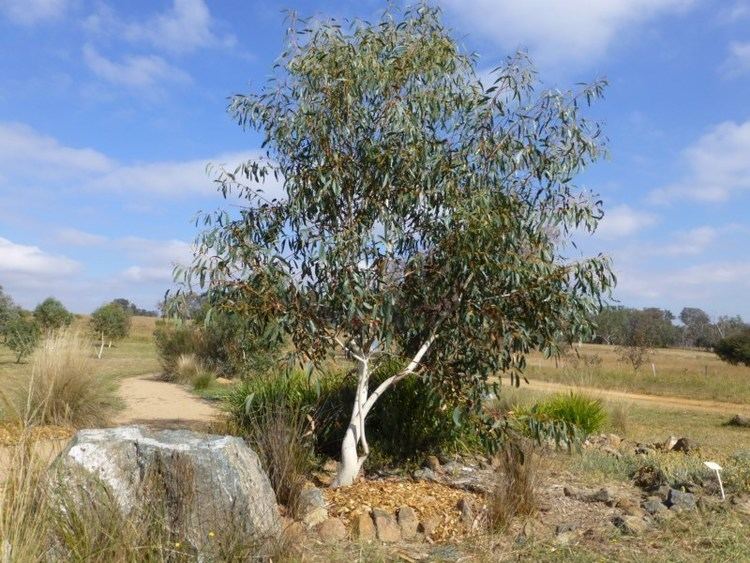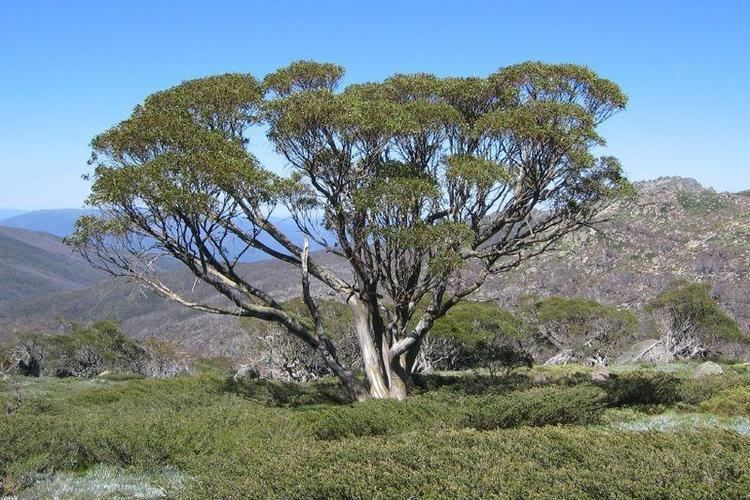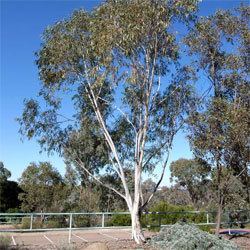Rank Species | Genus Eucalyptus Higher classification Gum trees | |
 | ||
Similar Gum trees, Eucalyptus coccifera, Eucalyptus gunnii, Eucalyptus delegatensis, Eucalyptus viminalis | ||
Eucalyptus pauciflora subsp niphophila
Eucalyptus pauciflora, commonly known as Snow Gum or White Sallee, is a species of flowering plant in the family Myrtaceae. It is a small tree or large shrub growing 4–8 m (13–26 ft) tall, occasionally reaching 20 m (66 ft), and native to subalpine and lowland habitats in eastern Australia. It is amongst the hardiest of all eucalyptus species, surviving the severe winter temperatures of the Australian Alps. Other common names include Cabbage Gum, Weeping Gum and White Sallee.
Contents
- Eucalyptus pauciflora subsp niphophila
- Beautiful eucalyptus pauciflora on salt spring island
- Description
- Subspecies
- Range
- References

Beautiful eucalyptus pauciflora on salt spring island
Description

The bark of Eucalyptus pauciflora is smooth and white to light grey or sometimes brown-red, shedding in patches or strips to give a mottled appearance. The grey-green adult leaves are usually lanceolate to broadly lanceolate with distinct parallel veins, but may be narrowly ovate. The tree is covered in a mass of white flowers in spring and summer. The term pauciflora (few flowers) is a misnomer, and may originate in an early collected specimen losing its buds in transit. Rather than losing its leaves in winter/autumn, the tree is evergreen, adapting to the weight of snow by progressively bending its branches so that the outermost branches extend vertically down and snow is shed from the leaves.
Subspecies
Six subspecies are recognised, treated as species by some botanists:

Range

Snow gums occur as woodlands and open woodlands at altitudes of 1,300–1,800 m (4,265–5,906 ft) in Victoria, Tasmania, New South Wales and the Australian Capital Territory, where they form the altitudinal limit of the tree line. The distribution of the lowland form extends a short distance across the Queensland and South Australian borders. Because of land clearing, few stands of lowland snow gum remain, and considerable efforts are being put into preserving the remnants.
E. pauciflora regenerates from seed, by epicormic shoots below the bark, and from lignotubers. It is the most cold-tolerant species of eucalyptus, with E. pauciflora subsp. niphophila surviving temperatures down to −23 °C (−9 °F) and year-round frosts. It has been introduced to Norway.
In Tasmania the species hybridises with Eucalyptus coccifera and Eucalyptus amygdalina.
